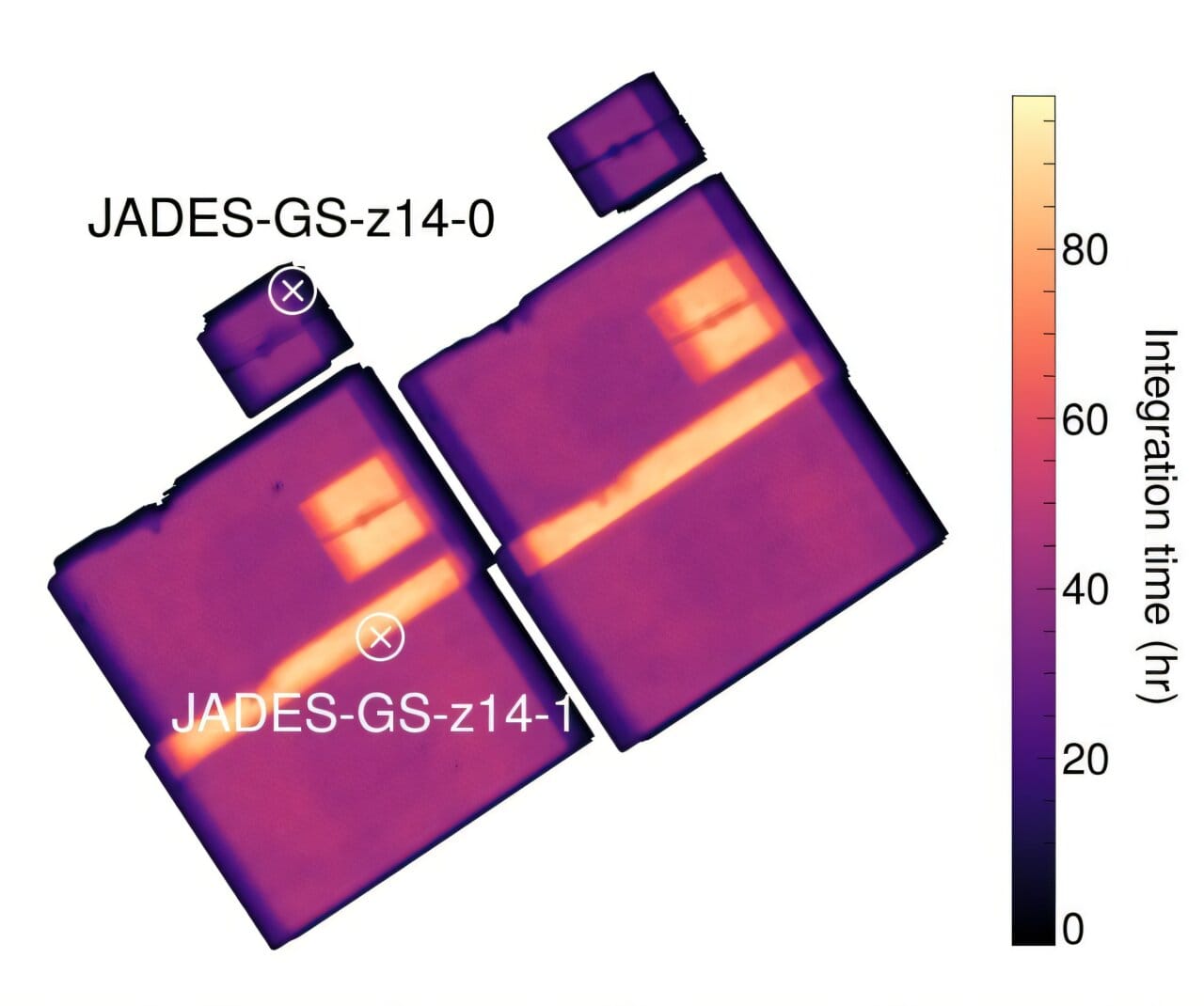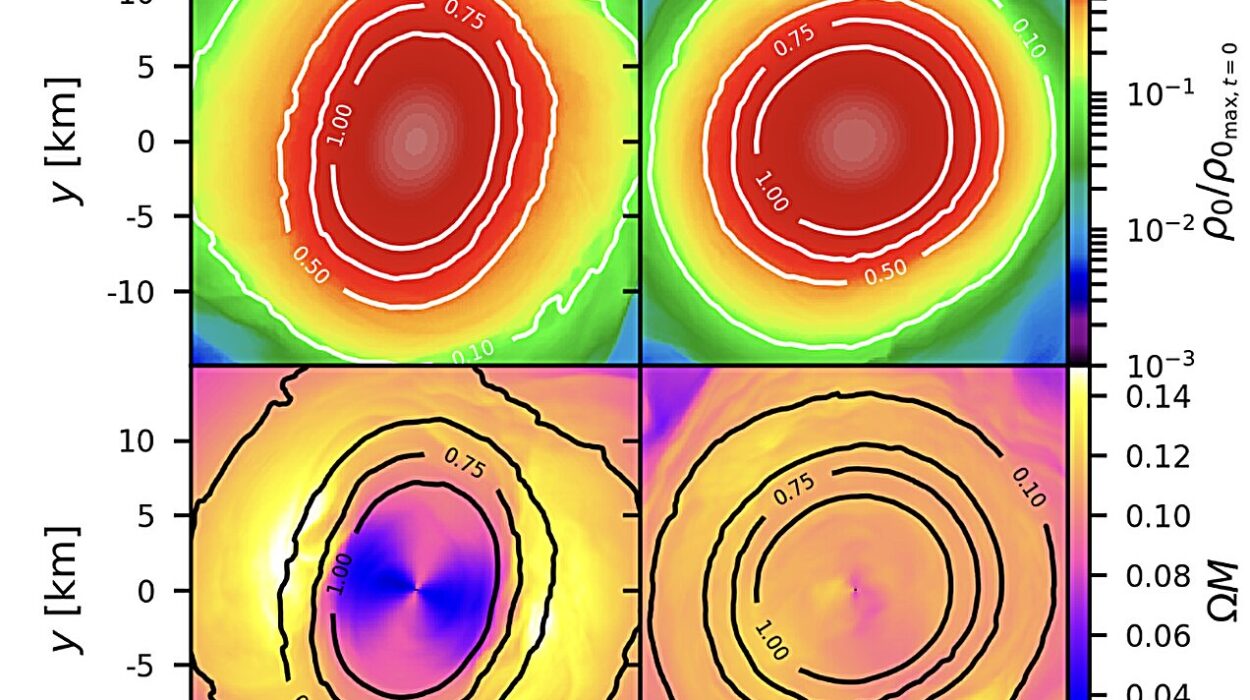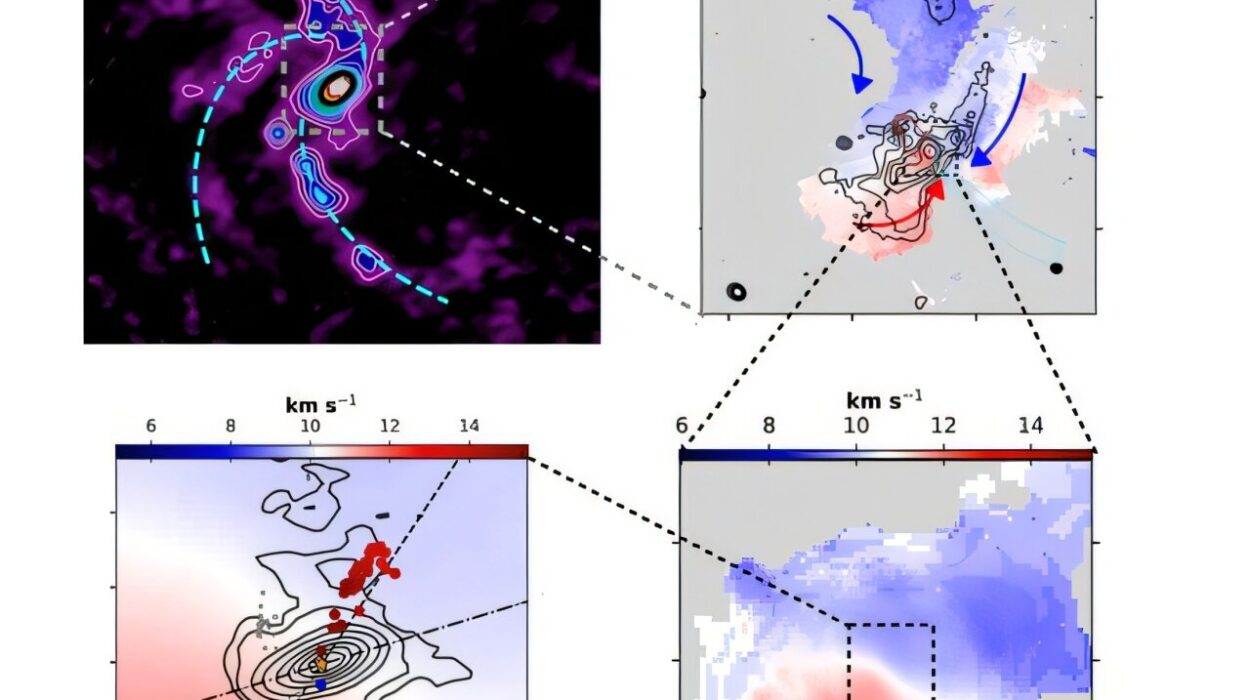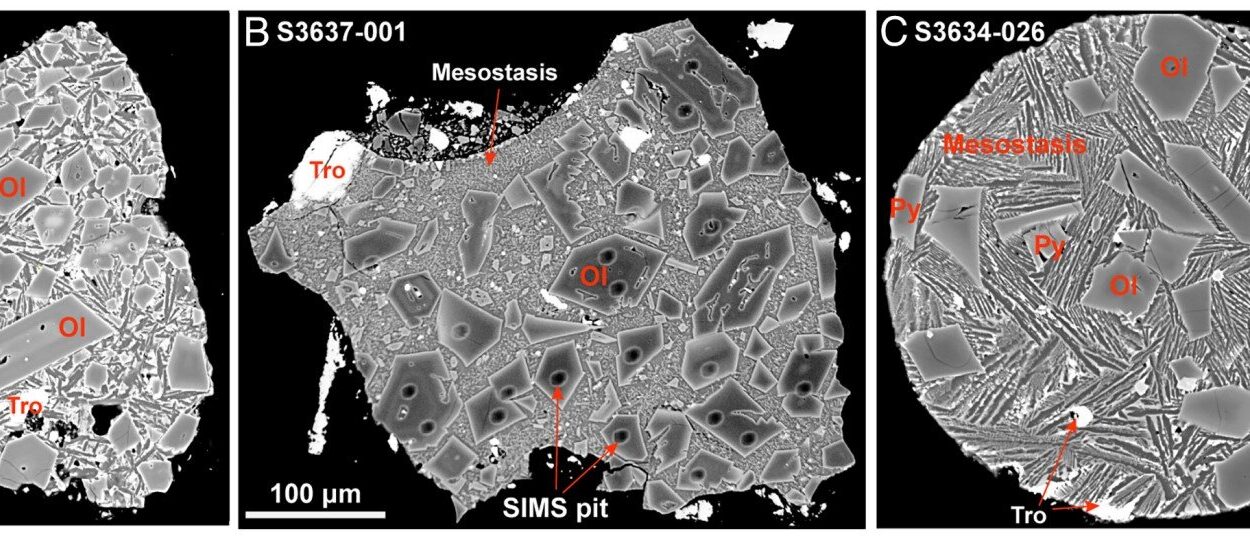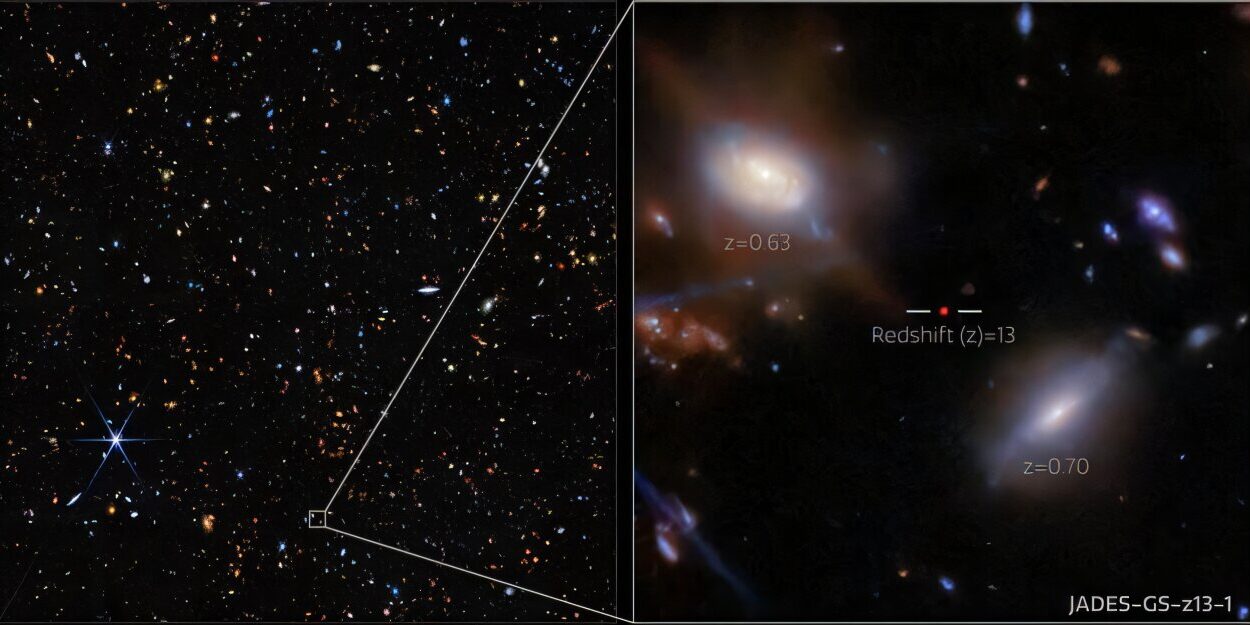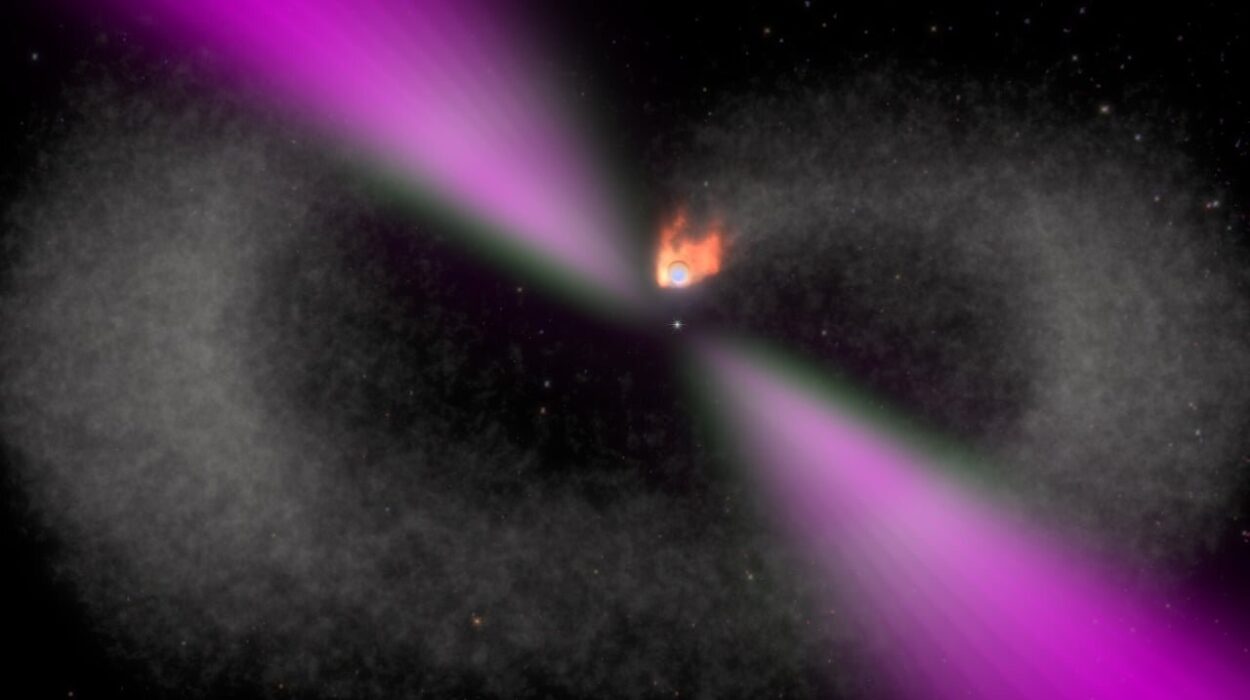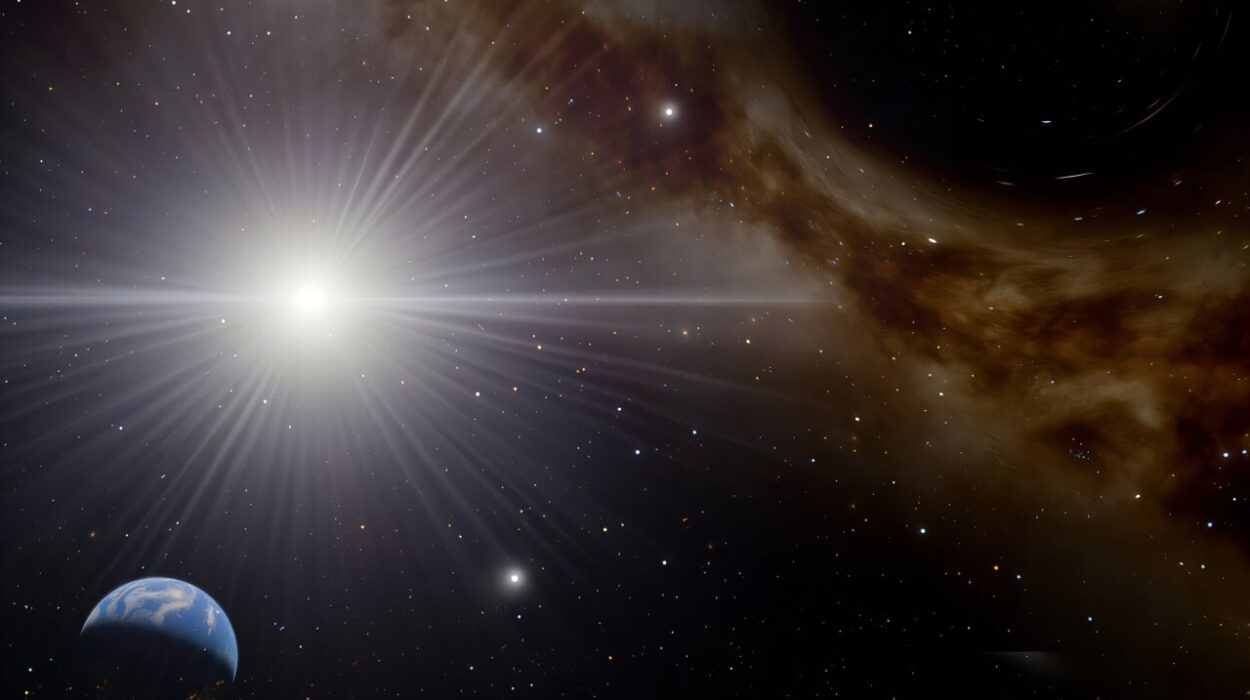In a quiet patch of the sky, far beyond the reach of ordinary telescopes, a ghostly light has traveled nearly 13.5 billion years to reach us. That faint whisper from the cosmos—an ancient, barely-there glow—is now changing how we understand the birth of galaxies in the early universe.
Thanks to the James Webb Space Telescope (JWST), scientists have identified and confirmed the faintest galaxy ever observed from the universe’s infancy. Named JADES-GS-z14-1, this tiny, primordial galaxy has just become a milestone in astronomy, revealing key clues about how the first galaxies formed and evolved only 300 million years after the Big Bang.
The results, published July 30 on the arXiv preprint server, are a testament to JWST’s unprecedented ability to peer deeper into the cosmic past than any observatory before it.
What JWST Was Built to Do
When JWST launched into space in December 2021, the excitement among astronomers was electric. Unlike Hubble, which mostly sees visible and ultraviolet light, JWST was designed to specialize in infrared light, allowing it to detect the ancient signals of galaxies that formed in the earliest epochs of the cosmos.
As the universe expands, light from these far-off galaxies becomes stretched into longer, redder wavelengths—a phenomenon known as cosmological redshift. The farther away a galaxy is, the higher its redshift. JADES-GS-z14-1 holds the record with a redshift of about 14.0, making it the most distant, faintest spectroscopically confirmed galaxy to date.
This galaxy is part of the JWST Advanced Deep Extragalactic Survey (JADES)—an international collaboration designed to probe the deepest reaches of time. The team behind this groundbreaking study was led by Zihao Wu of the Harvard-Smithsonian Center for Astrophysics.
A Flicker of Light in the Void
JADES-GS-z14-1 is no cosmic giant. It’s remarkably small, with a physical radius of just 163 light-years, and it harbors a stellar mass of about 40 million times that of our Sun. To put this in perspective, that’s minuscule compared to the Milky Way, which has hundreds of billions of stars and spans 100,000 light-years across.
Yet what makes JADES-GS-z14-1 so intriguing isn’t its size—it’s its timing and behavior. Observing this galaxy is like catching the first sparks in a dark universe. In fact, analysis of its star formation history shows that the galaxy experienced a dramatic surge in star birth just 10 million years prior to observation, forming nearly 70% of its stars in a cosmic blink.
Despite its youth and distance, it is actively forming stars at a rate of about two solar masses per year—a respectable pace for such a young galaxy. This reveals a picture of a galaxy that is compact, intense, and rapidly evolving at a time when the universe was still a newborn.
A Quiet Chemical Profile in a Roaring Youth
One of the most surprising aspects of the new observations is what wasn’t found. Using JWST’s Near-Infrared Spectrograph (NIRSpec) for an astounding 56 hours of deep spectroscopic exposure, the team hoped to detect ultraviolet metal emission lines—the glowing signatures of elements like oxygen and carbon formed in the nuclear furnaces of stars.
But JADES-GS-z14-1 remained largely silent in this regard. There were no significant detections of these spectral lines, which typically serve as markers of chemical enrichment. This suggests that the galaxy’s gas is extremely metal-poor, possibly containing less than 10% of the Sun’s metal content.
In the early universe, such low metallicity is expected. The first generations of stars formed from primordial hydrogen and helium left over from the Big Bang. Only through repeated cycles of stellar birth and death does a galaxy become enriched with heavier elements.
The absence of strong emission lines also suggests another intriguing possibility: a high escape fraction of ionizing photons. In simpler terms, this galaxy may be leaking powerful radiation into space, radiation capable of tearing electrons away from atoms—a key factor in the epoch of reionization, when the universe transitioned from darkness into light.
The Power of 70 Hours of Silence
While most astronomical discoveries are associated with bright explosions or swirling galaxies, JADES-GS-z14-1 is more like a cosmic whisper—a barely detectable signal revealed only through extraordinary patience and technological sensitivity.
To tease out this whisper, the team used JWST’s Mid-Infrared Instrument (MIRI) for over 70 hours, paired with 16 bands of photometry from the Near-Infrared Camera (NIRCam). Even then, the galaxy appeared only marginally in the mid-infrared.
This faintness isn’t just a technical detail—it speaks volumes about the kinds of galaxies that existed in the universe’s first few hundred million years. Unlike some early galaxies that blaze with activity and heavy elements, JADES-GS-z14-1 is a more subdued, pristine system, revealing the diversity of the first galactic structures.
A Window into Cosmic Origins
Understanding galaxies like JADES-GS-z14-1 is crucial to piecing together the history of the universe. In particular, this discovery helps refine our knowledge of the reionization era, a mysterious period when the first stars and galaxies began ionizing the fog of neutral hydrogen that filled the cosmos after the Big Bang.
Reionization fundamentally transformed the universe’s transparency, allowing light to travel freely through space. Scientists are still debating exactly when this process occurred and what triggered it. Galaxies like JADES-GS-z14-1—small, metal-poor, but producing intense radiation—may have played a key role.
“The weakness of metal emission lines suggests that strong nebular lines are not ubiquitous in early galaxies,” the researchers wrote. “These results underscore the diversity of early galaxy properties and provide key constraints on the metal enrichment, star formation, and ionizing conditions during the first 300 million years after the Big Bang.”
In other words, not all early galaxies look the same. Some are bursting with metals and glowing brightly in the infrared, while others, like JADES-GS-z14-1, burn more quietly, as if still wrapped in the mystery of their origins.
What Comes Next for JWST and Cosmic Archaeology
This discovery is just the beginning. JWST is designed to operate for at least 10 years, and missions like JADES are already planning deeper, more targeted observations of early-universe galaxies. As the telescope peers farther back in time, it may uncover even older galaxies, perhaps ones that formed less than 200 million years after the Big Bang.
Meanwhile, scientists will continue to study JADES-GS-z14-1 in more detail. How did it build up its stars so rapidly? Why does it lack metal emission lines? Could it be a proto-galaxy—one of the “seeds” from which larger galaxies eventually grew?
Each answer leads to more questions, and with JWST, we now have the tools to ask them with clarity, precision, and awe.
Echoes of Einstein in a New Age
Though Albert Einstein passed away decades before JWST was conceived, this discovery echoes his vision. It was Einstein’s theories of relativity that predicted the expanding universe and allowed scientists to interpret redshift as cosmic time travel. His idea that space and time are woven together laid the foundation for missions like JWST to probe that fabric for its earliest threads.
Einstein once said, “The most incomprehensible thing about the universe is that it is comprehensible.” And now, thanks to JWST, that comprehension has taken another leap. A galaxy once hidden in the dark has spoken its name across 13.5 billion years—and we have heard it.
More information: Zihao Wu et al, JADES-GS-z14-1: A Compact, Faint Galaxy at $z\approx14$ with Weak Metal Lines from Extremely Deep JWST MIRI, NIRCam, and NIRSpec Observations, arXiv (2025). DOI: 10.48550/arxiv.2507.22858
